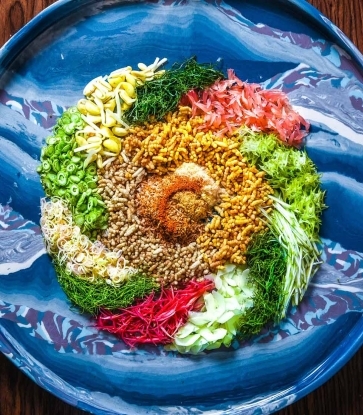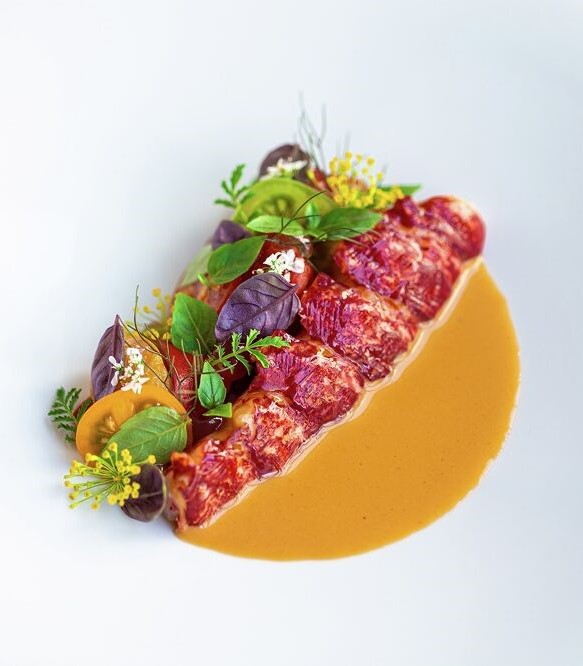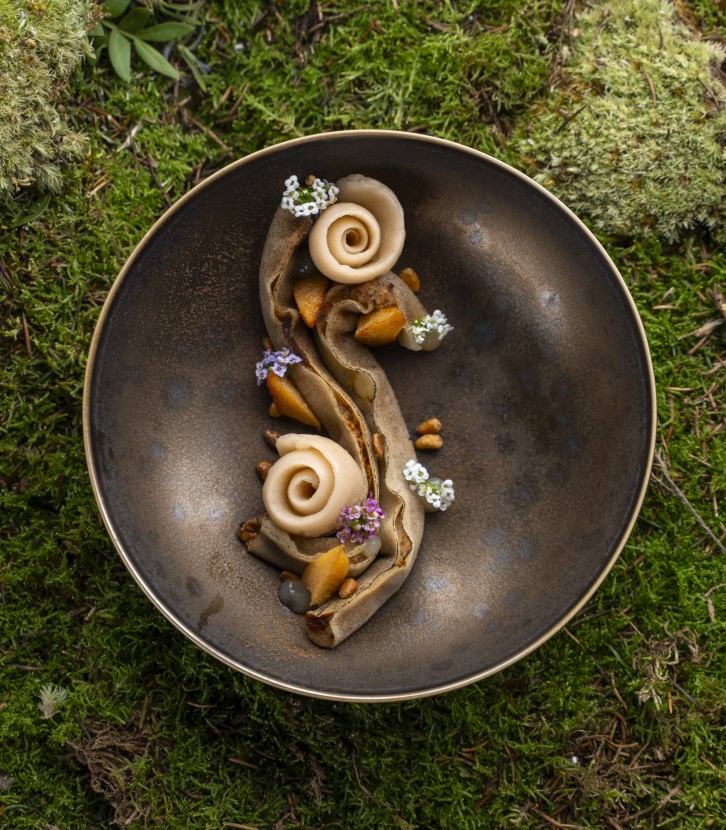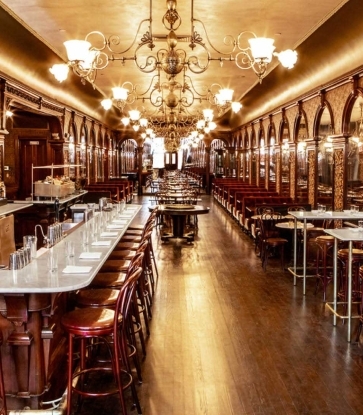In other cities, look for hotel amenities like high-end toiletries or rooftop pools. In Kyoto, look for one that’s altogether more divine: the traditional Japanese garden. Blending natural beauty with handcrafted elements — from arched bridges to stone lanterns — these thoughtful spaces are an art form here. Masterfully designed, they evoke the shifting beauty of each season and embody such elemental symbols as flowing water, drifting clouds or the quiet passage of time.
In fact, these are spaces packed with symbolic meaning — and you’ll feel their intended effects whether you consciously identify them or not. Take the tome-ishi, or “stop stone,” as one simple example. A fist-sized rock tied with cord, the tome-ishi is placed subtly along a path — not as a barrier, but as a gentle prompt to the visitor to pause or to turn, without the need for explicit signage or instruction.
In some ways, these are the little touches of a space that must be felt to be understood. Such deliberate design may seem solemn, but past visitors know that these are some of the most welcoming and sensory corners of Kyoto. They add both picturesque scenery to hotel room windows as well as a marvelous physical space for guests to enjoy in person, all crafted by professionals who take immense pride in their work at each outstanding MICHELIN hotel. Each garden offers something different, shaped by the vision of its creator and designed with the hotel guests in mind.
Finding a traditional Japanese garden in Kyoto is easy. But the spaces below are more than that. These are the peak of the art form — living canvases, lovingly maintained by skilled hands, and shaped to reflect the desires of Kyoto’s busy travelers. Whether they’re conscious of them or not.

Nanzenji Sando Kikusui
Kyoto, JapanLocated near Mount Hiei and its famous, historic temple complex, the six guest rooms at Nanzenji Sando Kikusui all look out towards the garden — itself a historic space created by celebrated landscape designer Ogawa Jihei VII (1860–1933) in the late 19th century. Once a feature of a wealthy kimono merchant’s estate, today the historic garden is tended to by the hotel’s fulltime gardener, Keisuke Hirabayashi, who cultivates the velvety, lush moss and handcrafts several features by himself, the garden’s bespoke bamboo fences included. “I hope guests will relax and enjoy the garden — to just spend time there, be in the moment. I’d like it to be a space that feels as if time has stopped,” he says.

Hotel Okura Kyoto Okazaki Bettei
Kyoto, JapanThe architecture and design at Hotel Okura Kyoto Okazaki Bettei may be modern, but the location — within the peaceful grounds of the Okazaki Betsuin temple — provides a strong connection to the heritage of the city. The hotel’s two gardens provide another link to tradition. Although each was created specifically for the hotel, they were envisioned with respect for the past at the forefront of their design. In the Geishun Garden, find plum and cherry trees that bloom in spring. In the Senshu Garden, foliage is at its most beautiful in autumn — and suites offer direct views.
The adjacent Okazaki Betsuin temple has extensive gardens of its own — and guests are encouraged to explore them, as well as to join in the serenity of early morning worship or a tea ceremony overlooking the grounds.
Book Hotel Okura Kyoto Okazaki Bettei with The MICHELIN Guide →

Fufu Kyoto
Kyoto, JapanThe garden is an integral part of the stay at this contemporary hotel in the Okazaki district, and it is plenty versatile: guests are invited to interact with the garden on their own terms. You'll find them relaxing by the pond or snapping selfies in thoughtfully designed nooks, strolling the garden path to a tucked-away bar in the evening or enjoying yoga sessions, tea ceremonies and flower arranging in the same space throughout the day.
“We designed the garden so people could appreciate it not only by looking, but by spending time here in different ways,” explains Wakana Fuijimoto, Fufu’s manager.

Genji Kyoto
Kyoto, JapanSet beside the Kamo River in Gojo-Kawaramachi, this boutique hotel was named in honor of The Tale of Genji, written during the Heian period (794–1185) by the noblewoman Murasaki Shikibu. In addition to this classic novel, the Genji Kyoto draws influence from other Heian traditions. The design concept of the hotel itself is a modern reinterpretation of a machiya (townhouse) building, while the green spaces pay homage to the clever design of tsubo-niwa — compact gardens designed to fit in the narrow alcoves between buildings, for the welcome touch of nature even in the smallest spaces.
The hotel has two gardens in particular: one in the lobby and one on the rooftop, the latter an ideal place to enjoy a drink with panoramic views of the river. Manager Eri Kono sees their gardens as “a bit more relaxed” than the typical hotel space. Somewhere “you can experience with your senses and enjoy without too much formality.”
Book Genji Kyoto with The MICHELIN Guide →

Aman Kyoto
Kyoto, JapanAman Kyoto occupies a part of the city that feels far removed from the crowds — and yet it lies within walking distance of one of Kyoto’s top attractions: the gold-adorned Kinkakuji Temple. The resort’s vast hidden garden is filled with impressive stone masonry, but here, the appeal of the natural goes far beyond the garden itself.
The rest of the property is an expanse of unspoiled forest, including cedars, maples and camphor trees, offering an ever-changing palette of colors in an atmosphere that feels more like a retreat than a typical Aman showpiece — a setting that evokes the Japanese concept of shinrin-yoku (forest bathing). Guests can bathe in mineral-rich onsen water in the Aman Kyoto’s spa, and each of the rooms and pavilions has an oversized bath crafted from fragrant hinoki (Japanese cypress). Lessons in ikebana (Japanese flower arrangement) with an expert — as well as instruction on how to make a miniature garden with one of the hotel’s own gardeners — are among the experiences on offer.
Hero image: © Aman Kyoto, Kyoto, Japan




















